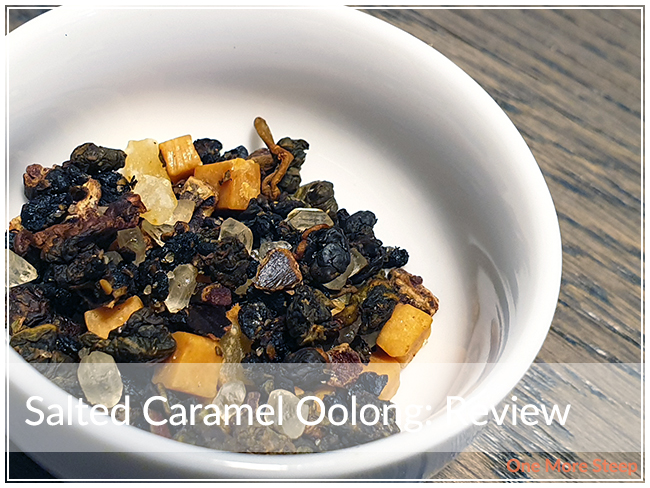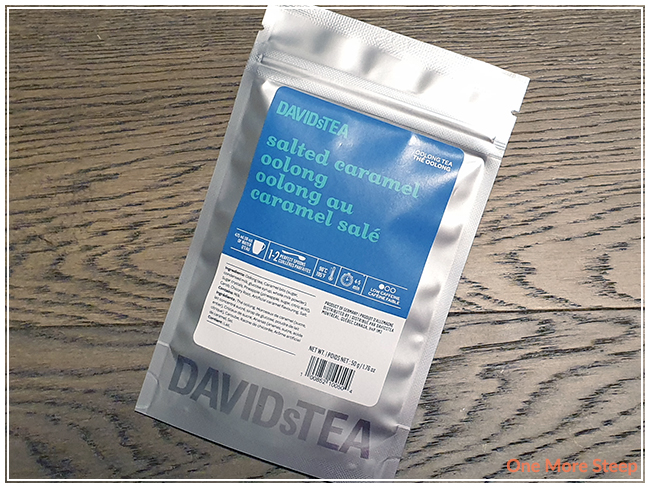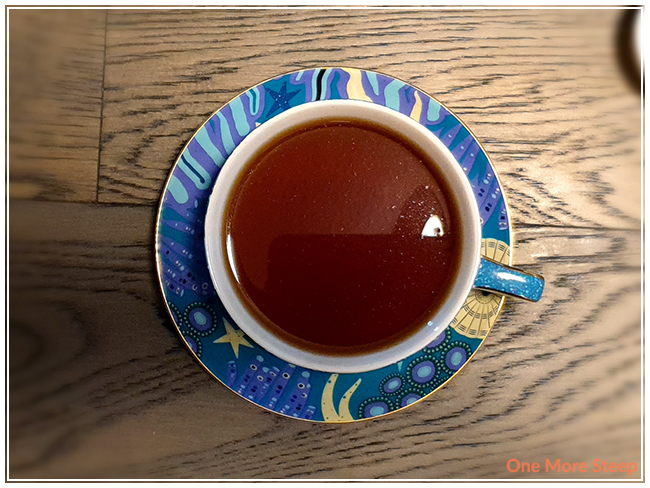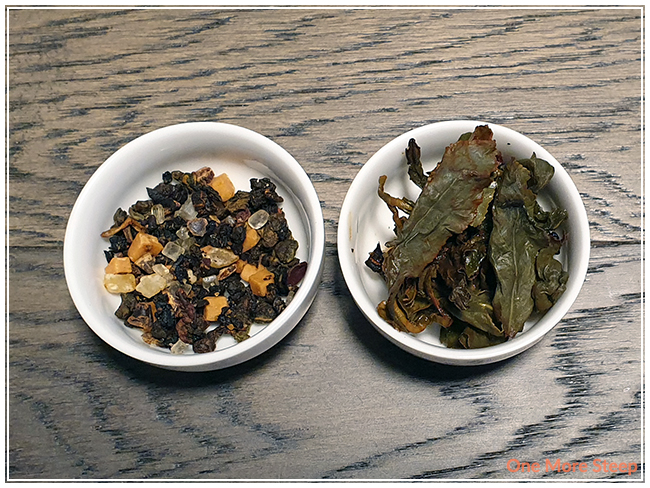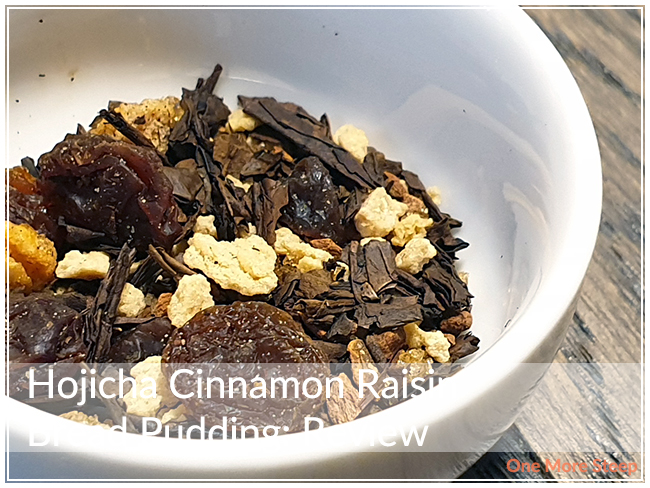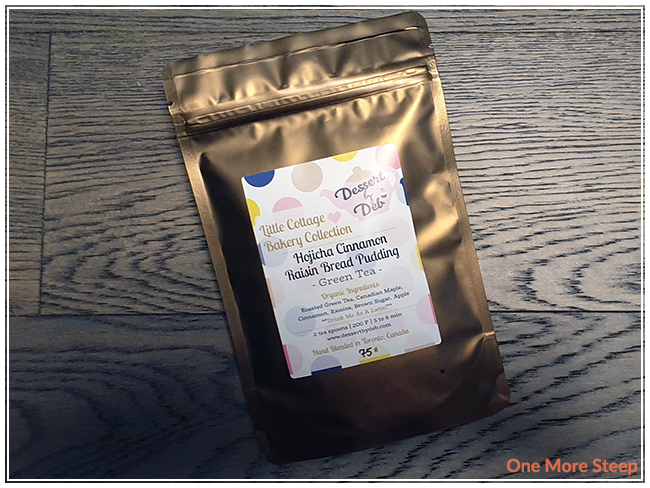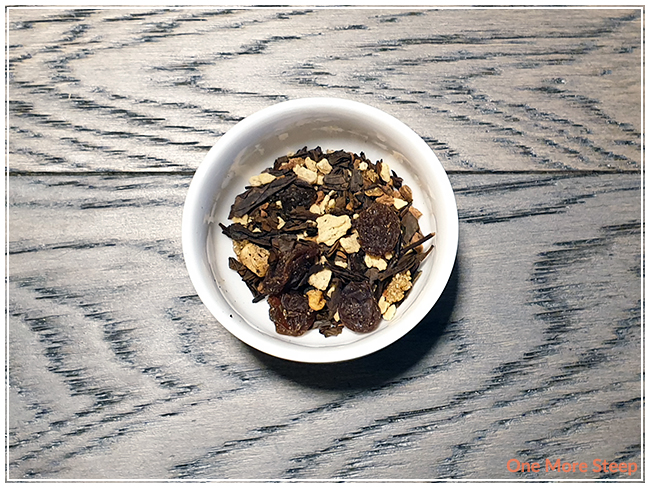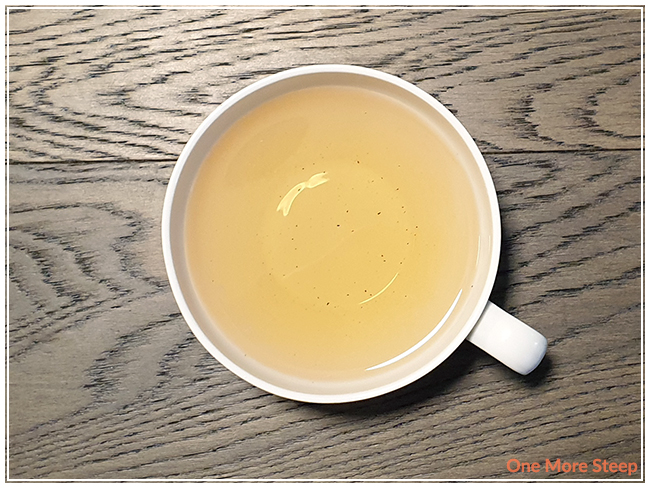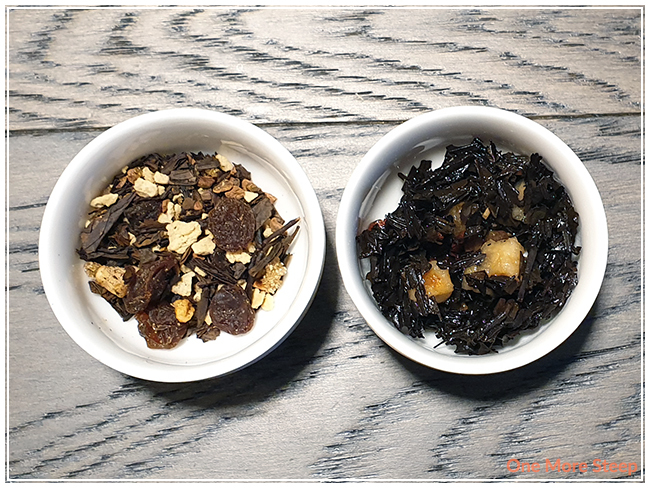Golden Dragon Pu’erh by DavidsTea
Pu’erh Tea / Straight
$12.98 for 50g
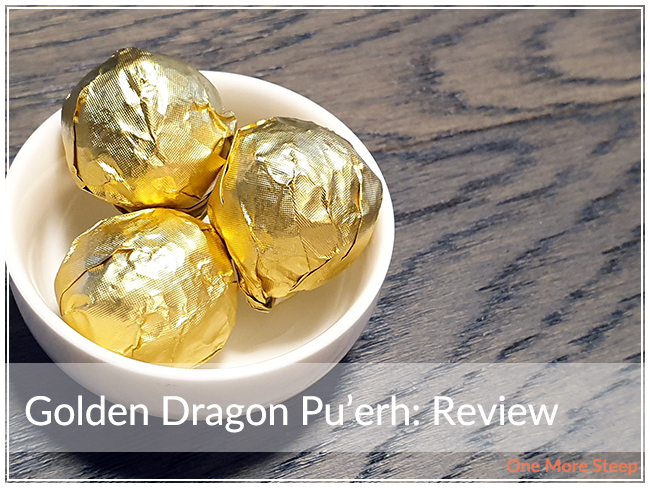
First Impressions
Golden Dragon Pu’erh is a pu’erh that I picked up on a whim when I was throwing together an online order. I’m not sure what I’ve done with myself, but apparently I buy pu’erh teas now. What can I say? Pandemic isolation has resulted in me behaving very strangely.
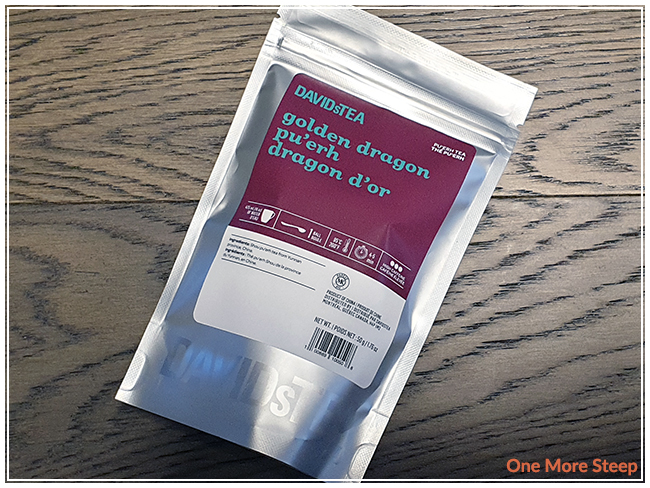
Golden Dragon Pu’erh comes in regular silver pouch from DavidsTea. The ‘golden’ part is reflected by the golden paper wrappers around each individual ball of tea. 50g gets you 8 balls in a pouch, so each one is 6.25g (and makes it $1.62 per serving as each ball = 1 serving). DavidsTea describes this as being a shou pu’erh (‘cooked’ pu’erh) from Yunnan province, China. On the online product page, there’s further information from this tea being grown in Menghai and is described as one of the first regions of China to pu’erh tea (all the way back in 1500BC!).
The leaves themselves are tightly balled up – with varying shades of brown ranging from light caramel to deep chocolate browns. The aroma really reminds me of cooked down mushrooms – just very earthy, the smell of dirt after a good rainfall. It really isn’t the most appealing, but I’ve played this game with pu’erh before so… onto the tasting we go.
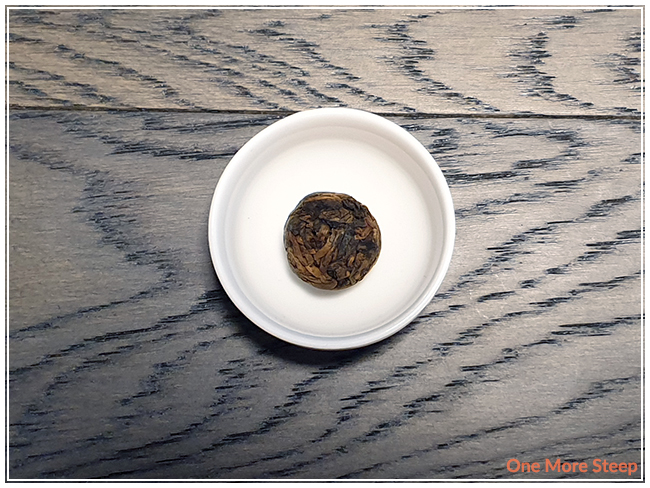
Preparation
DavidsTea recommends steeping Golden Dragon Pu’erh in 95°C (200°F) water for 4-5 minutes. I followed the steeping instructions and did an initial steep for 5 minutes.
First Taste
Golden Dragon Pu’erh steeps to a very deep brown with slight reddish tones. The aroma is very earthy and that is also reflected in the taste. It’s earthy, with just a hint of sweetness, and a really nice balanced flavour overall. There’s just something about Golden Dragon Pu’erh that makes me think of mushrooms, earthiness, post-rainfall freshness. There’s plenty of smooth umami qualities and it has a quality about it that reminds me a lot of the type of pu’erh that you might find served to you when you go out to eat at an authentic Chinese restaurant (especially during dimsum hours).
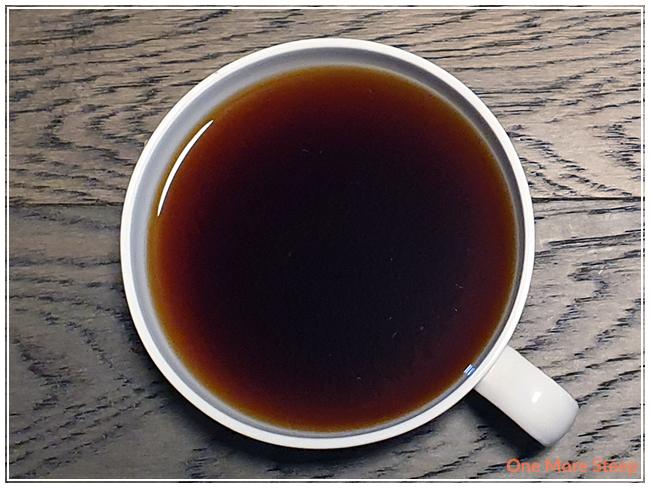
A Second Cup?
I resteeped Golden Dragon Pu’erh a total of seven times (eight steeps total) and it honestly got better with each steep until about the third resteep, then started to decrease in flavour (but was still worth drinking by the end). The tea takes on a more thickened liquor feel to it, lending itself to a pleasant mouthfeel experience. The flavour remains well-balanced and continued to remind me of a pu’erh that I might have been served at my favourite dimsum restaurant.

My Overall Impression
![]()
I loved DavidsTea’s Golden Dragon Pu’erh. There’s just something about this tea that gives me very strong nostalgia for memories of eating out with my family, which is honestly probably why I like it more than I feel like I should. It has a great flavour profile, is well-balanced, and resteeps incredibly well, so I wouldn’t mind recommending this (and continuing to drink it over and over again). Definitely worth the time to resteep it and have throughout the day (and night!).
Curious about the cup rating system? Click here to learn more.
